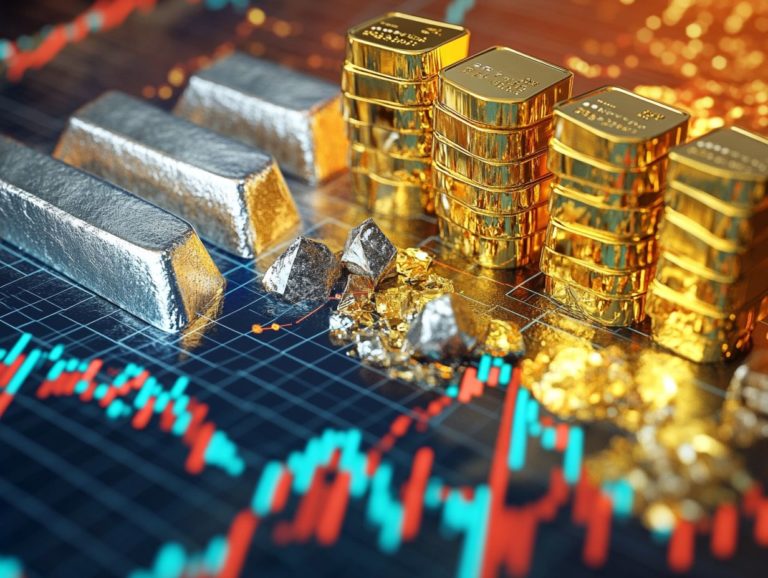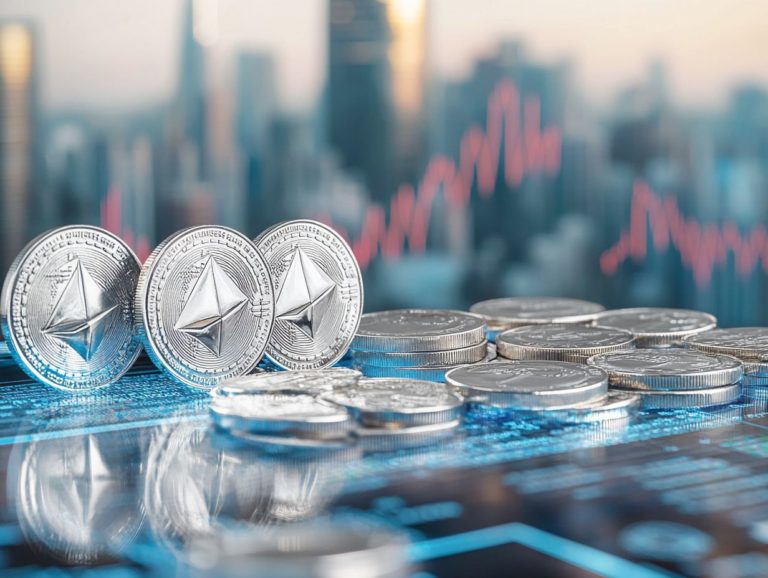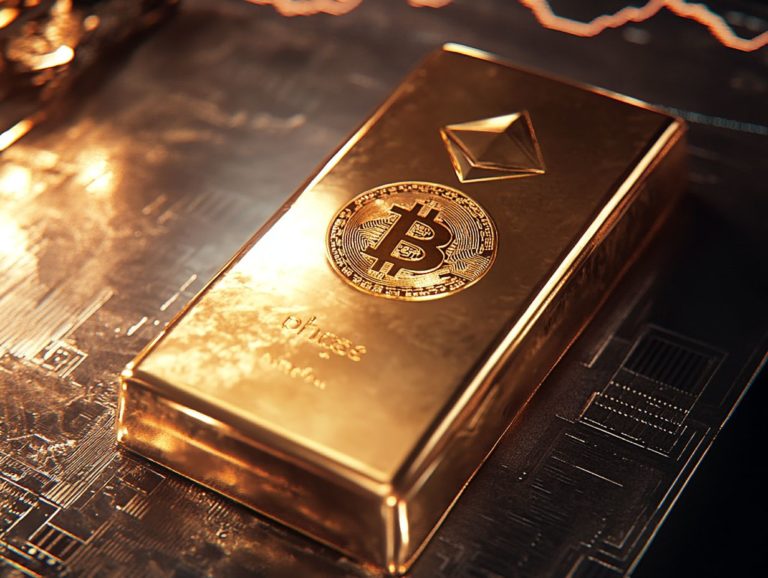Silver Bullion vs. ETFs: Market Trends
Investing in silver can be an exciting journey. You might be drawn to the tangible allure of silver bullion or prefer the convenience of silver ETFs.
This article delves into the essential differences between these two investment avenues. It provides insights into market trends, historical performances, and current outlooks.
You ll discover the pros and cons of each option. This will help you navigate your choices based on your risk tolerance and investment goals.
Whether you re a seasoned investor or just starting out, understanding these facets will empower your decision-making process.
Here are the key takeaways:
Contents
- Key Takeaways:
- Understanding Silver Bullion and ETFs
- Market Trends for Silver Bullion
- Market Trends for Silver ETFs
- Pros and Cons of Investing in Silver Bullion
- Pros and Cons of Investing in Silver ETFs
- Factors to Consider When Choosing Between Silver Bullion and ETFs
- Frequently Asked Questions
- What is the difference between Silver Bullion and ETFs?
- Which one is a better investment: Silver Bullion or ETFs?
- How have market trends affected the value of Silver Bullion and ETFs?
- Can I buy and sell Silver Bullion and ETFs at any time?
- Which one is more liquid: Silver Bullion or ETFs?
- What are the storage requirements for Silver Bullion and ETFs?
Key Takeaways:
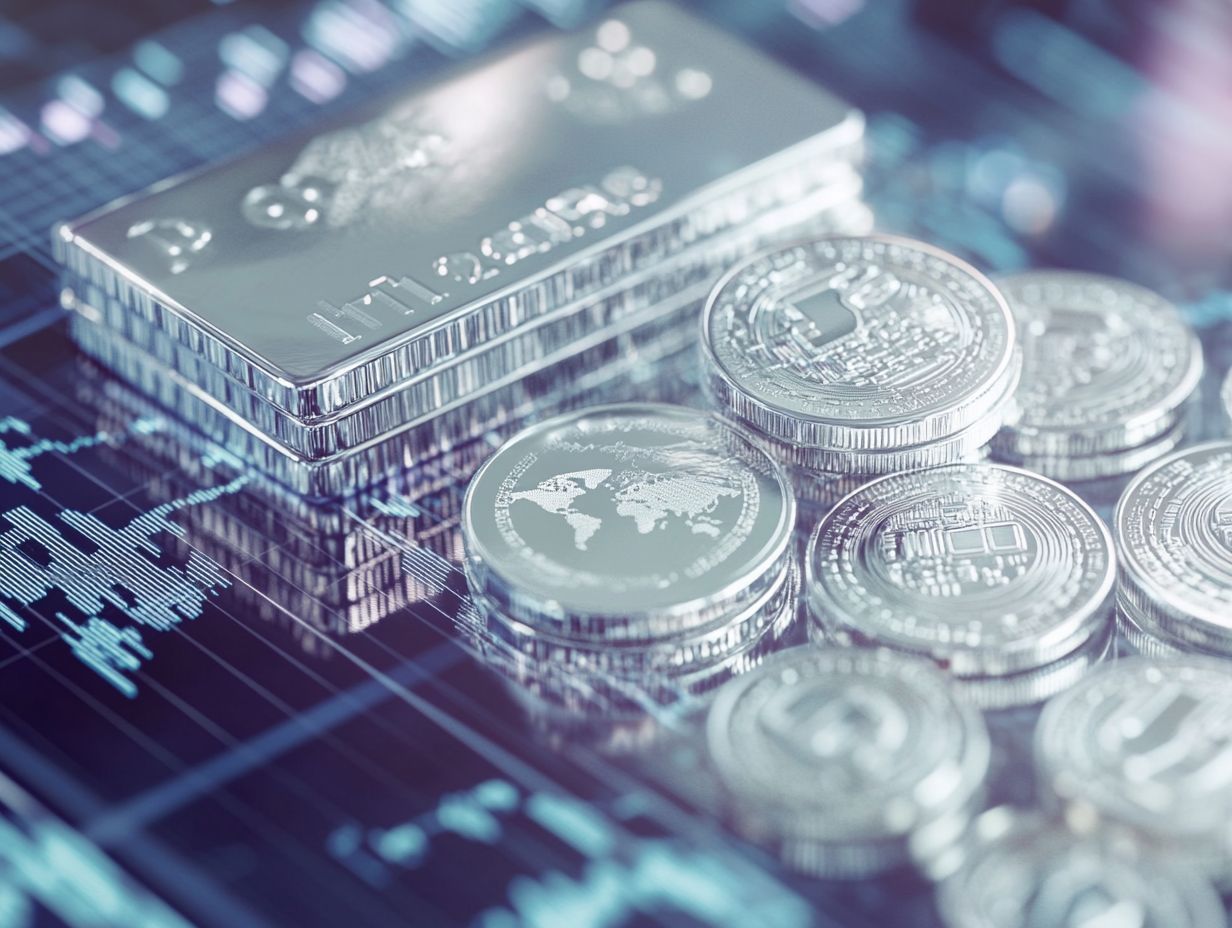
- Silver bullion and ETFs are two different forms of investing in silver, each with distinct definitions and differences.
- Historical performance and current market outlook indicate that silver bullion has potential for growth.
- The ETF market for silver is growing rapidly due to high demand, making it a popular choice for investors.
Understanding Silver Bullion and ETFs
Understanding the intricacies of Silver Bullion and ETFs is essential for you as an investor aiming to spread out your investments with precious metals. Silver, in particular, has experienced consistent demand growth, both in industrial applications and as a sought-after investment asset.
Opting for silver bullion often acquired in physical form offers a tangible ownership experience that many find appealing. Exchange-Traded Funds (ETFs), on the other hand, provide a more liquid and accessible route to investing in silver. This option frees you from concerns about physical storage.
Each option comes with its own distinct characteristics and risks. You must carefully navigate these to optimize your market exposure and achieve your desired returns.
Definition and Differences
Silver bullion refers to physical silver in the form of bars or coins. In contrast, ETFs are investment funds traded on stock exchanges, giving you exposure to silver prices without the hassle of owning the physical metal.
When you choose silver bullion, you enjoy the thrill of holding a tangible asset. This can provide a reassuring sense of security against market fluctuations. However, ETFs present a more liquid and manageable investment avenue. You can trade ETFs like stocks, effortlessly buying and selling shares that reflect the market value of the underlying silver.
This distinction underscores the varied ownership experiences. With silver bullion, you’re responsible for its safekeeping, while ETFs simplify the process. Both options cater to different investment strategies and risk appetites.
Market Trends for Silver Bullion
The market trends for silver bullion have experienced notable fluctuations over the years. These changes are driven by a myriad of economic factors, such as inflation rates, industrial demand, and broader conditions impacting precious metal prices. As an investor, you ll want to keep a close eye on these trends. They directly affect the performance of silver bullion.
This asset not only acts as a safe haven during economic downturns but also plays a crucial role in consumer applications, including electronics and solar panels. Understanding these dynamics is crucial! It can help you make smart investment choices and maximize your returns.
Historical Performance and Current Outlook
The historical performance of silver reveals a fascinating tapestry of volatility. Prices are swayed by an array of market conditions and demand trends throughout the decades, establishing it as a distinctive investment option.
This intrinsic variation not only captures the attention of seasoned investors but also entices newcomers eager to tap into the potential of this precious metal. To truly grasp silver’s price fluctuations, one must explore pivotal events, like economic crises. These events often propel investors toward safe-haven assets. The evolving industrial demand, particularly in sectors like electronics and renewable energy, also plays a crucial role.
In the current economic landscape, factors like inflation rates and currency fluctuations are integral to shaping silver’s future outlook. Analysts sift through demand forecasts and market indicators, emphasizing silver’s growing significance in green technologies. This hints at an exhilarating path for its price trajectory!
In summary, understanding the differences between silver bullion and ETFs, along with understanding silver market trends and historical performance, can help you make informed investment decisions. Now is a fantastic time to explore silver investments!
Market Trends for Silver ETFs
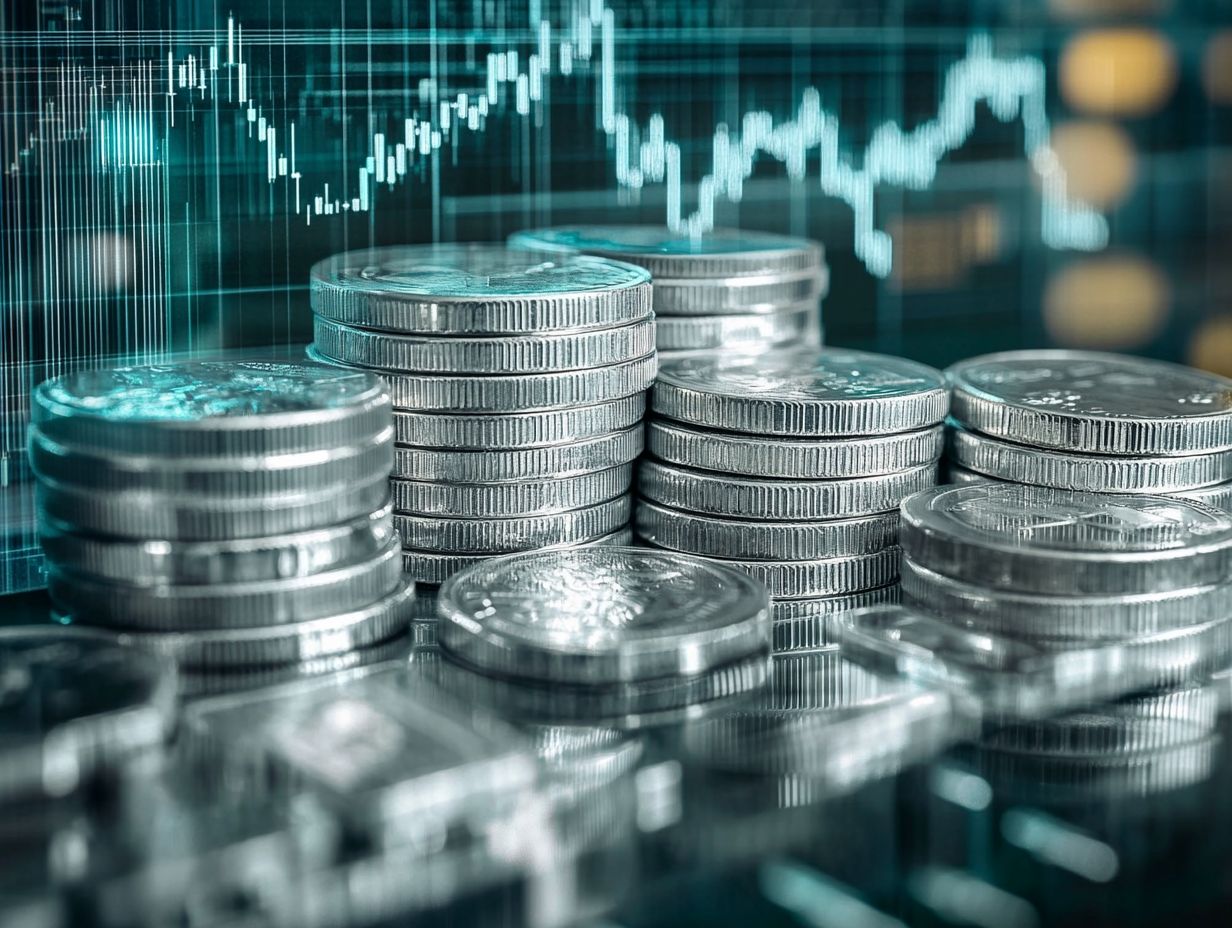
Market trends for silver ETFs are gaining significant momentum as you seek alternative investment options to protect against inflation and market volatility. These instruments offer a cost-effective way to gain exposure to silver prices without the complications of physical ownership.
The growing popularity of silver ETFs speaks to a broader movement within the investment community toward diversification and the ease of buying and selling. You can easily trade shares, allowing you to capitalize on silver’s performance in a swiftly evolving economic landscape.
Growth and Demand in the ETF Market
The surge in silver ETFs over recent years can be traced back to your growing interest in a straightforward method to leverage silver’s market performance and shield yourself from inflation.
As worries about economic instability mount, these investment vehicles become increasingly attractive, offering you both liquidity and accessibility. Many investors are diversifying their portfolios by incorporating silver ETFs, often perceiving them as a safe haven amid market turbulence.
The trend toward sustainable investment strategies has further fueled your curiosity about precious metals, perfectly aligning with broader economic indicators such as rising inflation and currency fluctuations. Consequently, the collective actions of investors reflect a strategic shift toward commodities, underscoring their significance in today s financial landscape.
Pros and Cons of Investing in Silver Bullion
Investing in silver bullion can be an exciting opportunity! It presents you with a unique set of advantages and disadvantages that deserve your attention. You’ll appreciate the tangible benefits of physical ownership. However, it’s important to weigh the associated risks and costs related to storage and market fluctuations.
Navigating this landscape requires a careful assessment to make informed decisions that align with your investment goals.
Advantages and Disadvantages
Investing in silver bullion offers you tangible ownership and the potential for significant returns. It s vital to consider both the advantages and disadvantages. While you may appreciate the security that comes with holding tangible assets like silver especially during economic downturns historical data suggests precious metals often retain value better than stocks.
Take the 2008 financial crisis, for example; silver prices surged by over 50%, drawing in a wave of new investors seeking a safe haven. However, you should also keep in mind the ongoing storage costs associated with silver, which can deter some, particularly if you re investing smaller amounts.
The silver market is also shaped by various factors, including industrial demand and geopolitical tensions, leading to price fluctuations that might make you hesitant to dive in. Understanding these complexities is essential for making informed decisions in the ever-evolving landscape of silver investing.
Pros and Cons of Investing in Silver ETFs
Investing in silver ETFs offers you unique advantages and disadvantages that are worth considering.
On one hand, you ll find the ease of trading and liquidity to be appealing. On the other, you may encounter the complexities associated with managing physical silver bullion.
It’s important for you to weigh these factors carefully to determine what aligns best with your investment strategy. Are you ready to explore how silver can fit into your investment plan?
Advantages and Disadvantages
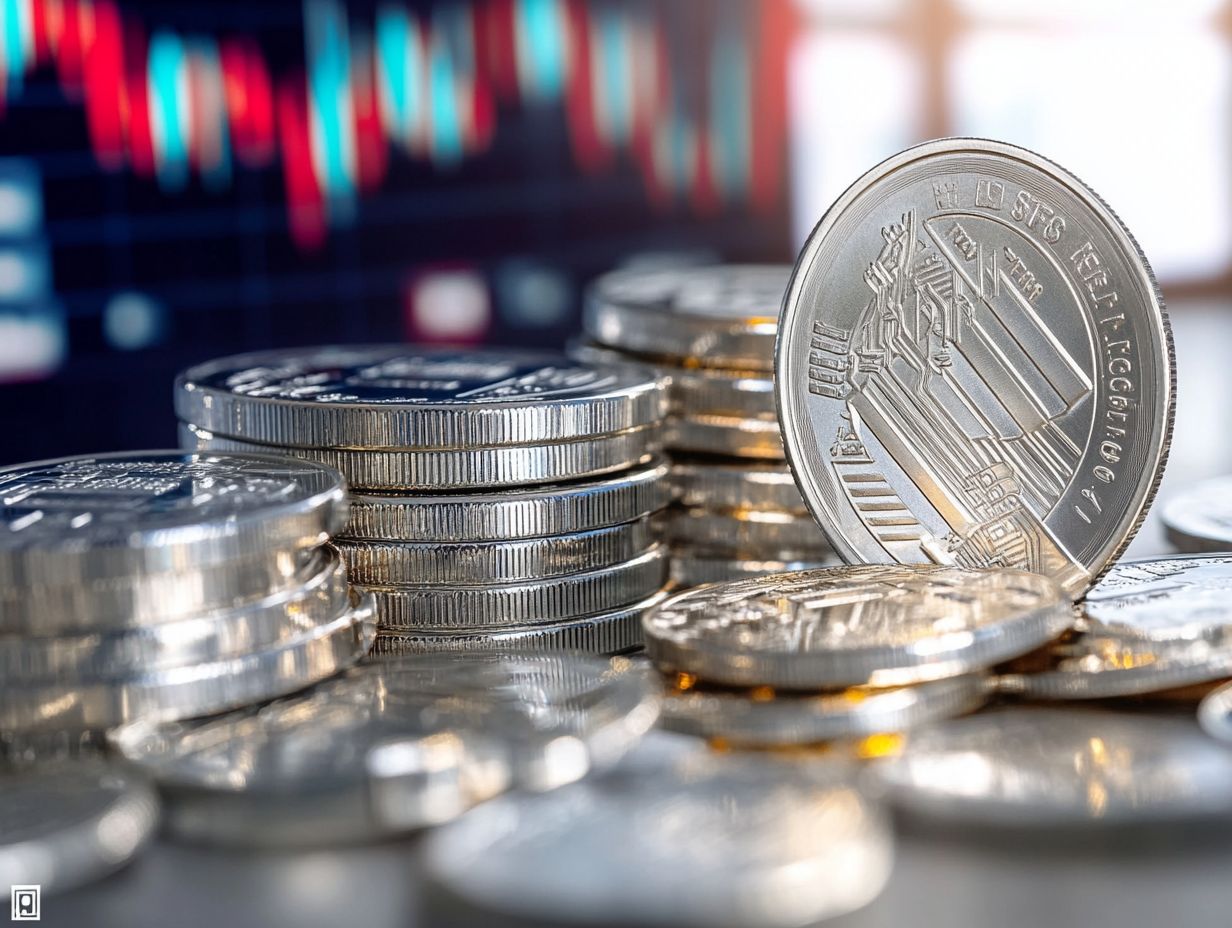
The primary advantages of silver ETFs lie in their high liquidity the ease of buying or selling an asset and low transaction costs. However, there are also risks in the market and limited benefits of physical ownership. These investment vehicles enable you to quickly enter or exit positions, making them particularly attractive in volatile market conditions.
You ll find that silver ETFs generally have lower management fees compared to traditional mutual funds. This can significantly boost your overall returns over time. Keep in mind that these ETFs are sensitive to market fluctuations; prices can be swayed by factors like changes in interest rates, geopolitical events, and currency strength.
Consider the lack of tangible asset benefits with silver ETFs, which may diminish the perceived safety net that comes from investing in physical silver. Ultimately, these factors play a critical role in shaping your investment strategy and risk tolerance in the silver market.
Factors to Consider When Choosing Between Silver Bullion and ETFs
When contemplating an investment in silver bullion versus silver ETFs, think carefully about your risk tolerance, investment goals, and the distinct advantages and disadvantages each option offers.
This approach guides you in making a decision that aligns with your financial aspirations.
Risk Tolerance and Investment Goals
Understanding your risk tolerance and investment goals is crucial when deciding between silver bullion and silver ETFs, as each option has its own unique risks and potential rewards.
If you’re a conservative investor, you might lean towards silver ETFs because of their liquidity and ease of trading. This choice can provide a comforting sense of security, especially during unpredictable market fluctuations.
On the other hand, if you have a higher risk tolerance, you may choose to invest in physical silver bullion to take advantage of potential price spikes. However, this path carries challenges, such as storage concerns and market volatility.
If you’re focused on long-term wealth preservation, accumulating physical silver could bring you peace of mind. Conversely, if you’re a younger, more aggressive investor aiming for capital appreciation, you might prefer the diversified strategy that silver ETFs offer. To navigate the intricacies of the market, it’s essential to understand what to know about silver price fluctuations. These varied profiles illustrate how your personal financial objectives directly influence your investment choices.
Frequently Asked Questions
What is the difference between Silver Bullion and ETFs?
Silver bullion refers to physical silver in the form of coins, bars, or rounds. In contrast, ETFs (Exchange Traded Funds) are investment funds that hold silver assets. Bullion can be physically held by the owner, while ETFs are bought and sold on the stock market.
Which one is a better investment: Silver Bullion or ETFs?
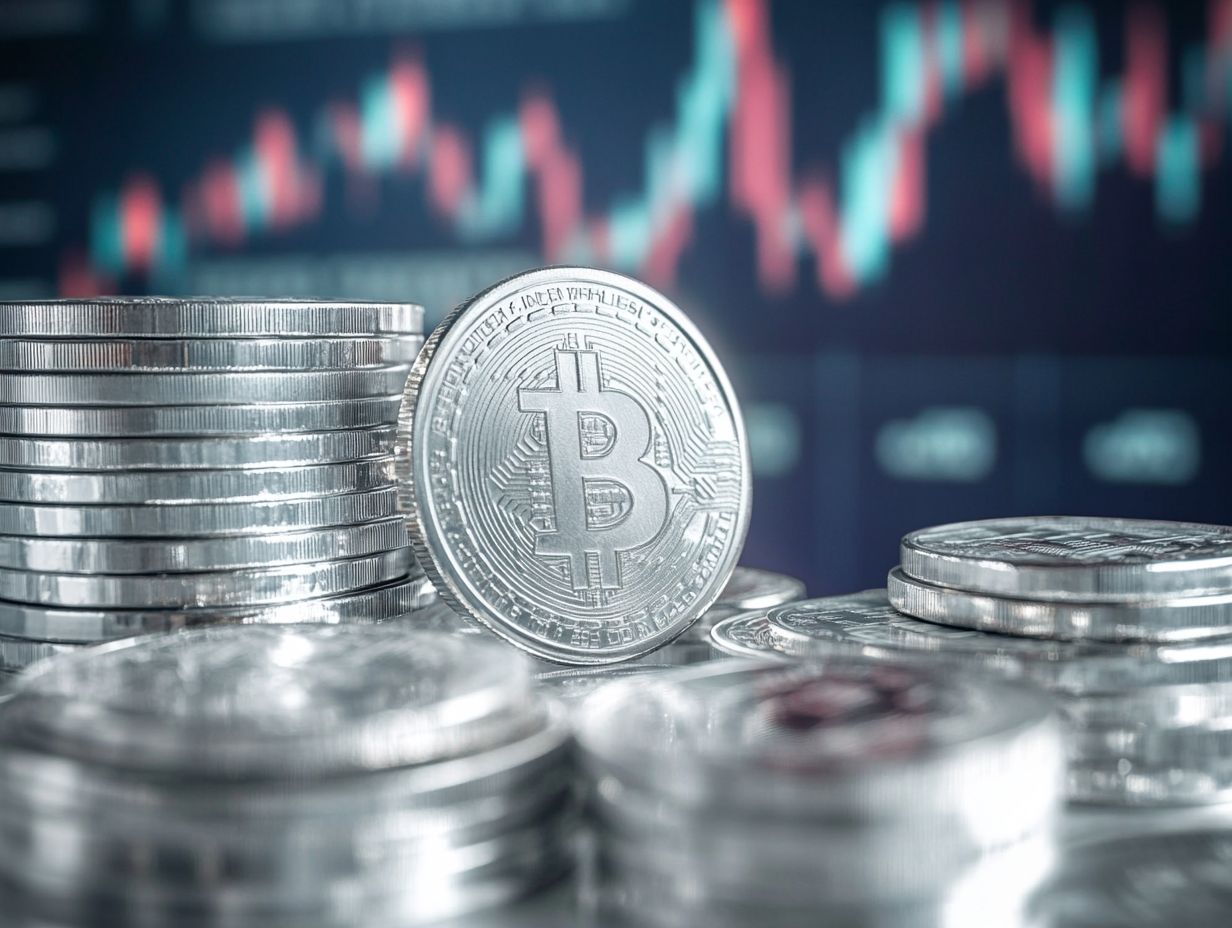
The choice between silver bullion and ETFs ultimately depends on your investment goals and risk tolerance. Bullion offers tangible ownership and protection against inflation, while ETFs allow for more flexibility and diversification.
How have market trends affected the value of Silver Bullion and ETFs?
Market trends, such as supply and demand, economic conditions like inflation rates and employment levels and investor sentiment can significantly impact the value of both silver bullion and ETFs. For example, a decrease in demand for silver can lead to a decline in the value of both forms of investment.
Can I buy and sell Silver Bullion and ETFs at any time?
Yes, you can buy and sell silver bullion and ETFs at any time during market hours. However, remember that the value of these investments can fluctuate, so carefully consider the timing of your transactions.
Which one is more liquid: Silver Bullion or ETFs?
ETFs are generally considered more liquid than silver bullion, as they can be easily bought and sold on the stock market. Bullion, on the other hand, may require additional steps and fees to sell.
What are the storage requirements for Silver Bullion and ETFs?
Storing silver bullion requires a physical space. You can keep it at home or use a secure storage facility.
Exchange-Traded Funds (ETFs) offer a convenient alternative. They are held electronically through a brokerage account, so you don t have to worry about physical storage!










